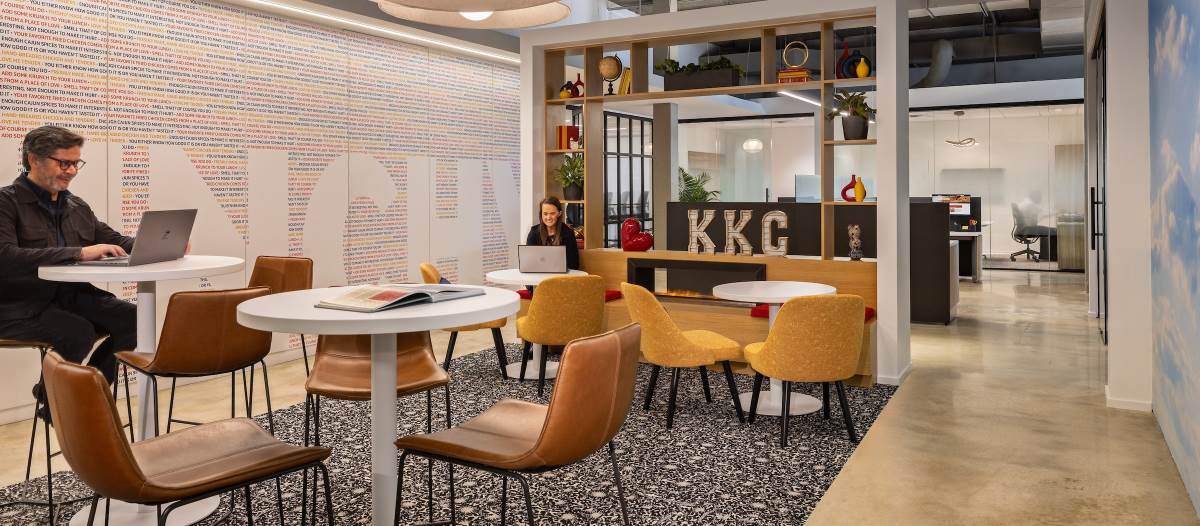With Purpose
Creating spaces that fit organizational needs

Facility managers are entering another year of unknowns driven by the ongoing pandemic, global economic (in)stability, inflation and the Great Resignation. Creating a workplace that supports productivity, employee retention and recruitment and cost efficiency is a tough task.
Unfortunately, there is no universal answer to the question of right size. Some organizations will need more space and some will need less – and their reasons will be very different. Within that, the layout of the space must be purpose-built to accommodate the unique needs of that business and the preferences of its employees.
While that means more work must go into figuring out where to go from here, a framework does exist for getting answers to these tough questions.
Space must support the mission
This may seem obvious, as most organizations recognize that physical space – their second largest cost center after salaries – should be purpose-built to support the mission of the organization. This is why the first step is to establish that an organization's real estate must support three complementary goals:
-
Maximize productivity to drive revenue
-
Optimize the employee experience, especially in the context of the Great Resignation
-
Achieve goals one and two at the lowest possible cost
Naturally, the formula for achieving all three goals gets a lot harder to compute in a hybrid work reality where space requirements for each user – employees, contractors, patients, students, etc. – fluctuate on a daily basis.
Safety first, but not alone
In response to the first goal, it has become clear that productivity can remain high without in-person collaboration. Yet, most employees and businesses are still eager to provide in-person collaboration opportunities to optimize productivity and results.
Another factor to consider is that the rationale for providing in-person space has changed. Pre-COVID-19, retaining and attracting talent was all about establishing a dynamic workplace with lots of amenities. That is still partly true. But employees have elevated their expectations for the in-office experience. In response, organizations must create spaces that are, in priority order:
-
Safe: Employees have to feel safe and comfortable in the office. Miss the mark here and the physical workplace investments will never return value as people will simply stay home. On the other hand, make them come into an office they do not want to be in, and they will quit.
-
Useful: Even if employees feel safe at work, if the office does not offer something they cannot get at home, they may opt for the comfort of their own couch. The one benefit no one can get at home is in-person collaboration with teammates. The office of the future must be optimized to foster collaboration above all, with other amenities playing a supporting role.
-
Appealing: Office appeal is no longer just a way to differentiate from the competition. Again, it has to provide an emotional and social experience that they cannot get at home.
Welcome to the neighborhoods
One valuable way to ensure these goals are met is to establish workspace neighborhoods. In the office context, a neighborhood is a working environment – a section of the office – intended for a specific segment of the workforce. Traditionally, this has been done by separating teams by function, or department. But as long as there is a reason why a certain person (or group) sits where they do, a neighborhood exists.
A neighborhood can also serve to support a specific type of activity (e.g., collaboration, focused work) or focus on a specific set of amenities (e.g., breakrooms with games, conference rooms with expensive tech). In full acknowledgement of the always-evolving nature of work, project-based neighborhoods to support short-term campaigns such as product launches can bring cross-functional teams together in a given space to achieve a specific goal.
When done right, they achieve each of the three mission-critical goals stated above. The question is, how does an FM leader know which neighborhoods serve the mission best, how should they be set up, and how often should they evolve to keep pace with changing employee requirements and expectations?
Prescriptive real-time insights now required
Answering those questions is when the real fun begins – and the real value starts to emerge. It all comes down to having access to comprehensive, actionable data.
No one can understand how much space they need until they know how many people are in the office on any given day and where they tend to sit or congregate when on site. Tracking space utilization, employee density and mobility flows with sensors provides a more accurate and predictive understanding of employee preferences than simply asking teams how, where and when they like to work.
But sensors are not enough. Businesses should take advantage of every possible data source. For example, data from employee-enablement tools such as desk- and room-booking software enables businesses to evaluate behavior trends much more clearly than simply checking to see if rooms are generally full. Environmental data from sensors that track indoor air quality, light and noise levels can enhance an understanding of why a certain space may be more heavily utilized than another.
Add information gleaned from sources such as visitor management solutions, badge data and Wi-Fi connectivity and an authentic picture of the human-building relationship emerges. Even better, once all this data is collected and analyzed in a unified context – ideally in a single platform to keep things simple – businesses can make highly informed decisions that make it possible to optimize their space for their current and future needs.
Commit long term
No business should expect to instantly find a perfect long-term solution to their space questions from a quick exercise. Rationalizing and refocusing space is an ongoing process that will yield early successes. But the real value emerges through continuous analysis of complete and evolving data.
With the right mindset, technology and data, the question of “how much space is right for me?” will become clearer, and both employees and bottom line will appreciate the effort.

Travis Kemp is vice president of product at FM:Systems. He is an experienced technology leader with a demonstrated history of working in SaaS, media, healthcare and automotive industries. With a strong entrepreneurial mindset, Kemp is professionally skilled in product development, manufacturing, operations and supply chain. He earned his bachelor’s degree in computer network and system administration (CNSA) from Michigan Technological University.
Read more on Occupancy & Human Factors and Real Estate
Explore All FMJ Topics









